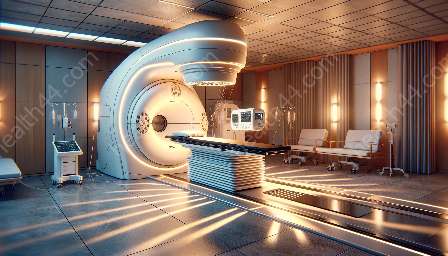Proton therapy machines are cutting-edge medical devices used for radiation therapy in cancer treatment. They utilize proton beams to target tumors with precision, offering significant advantages over traditional radiation therapy machines. Proton therapy is a type of radiation therapy that is considered to be highly effective due to its ability to deliver a high dose of radiation directly to the tumor while minimizing damage to surrounding healthy tissues. In this article, we will explore the technology behind proton therapy machines, their compatibility with other radiation therapy machines, and their role as essential medical devices & equipment in modern healthcare.
The Science Behind Proton Therapy Machines
Proton therapy machines are advanced and complex systems that deliver proton beams to cancerous tumors. Unlike conventional X-ray radiation therapy machines, which use photons, proton therapy machines use protons, which are positively charged particles. Protons can be precisely controlled to deposit the majority of their energy at the tumor site, with minimal damage to healthy tissues beyond the tumor. This precision targeting is crucial in minimizing side effects and maximizing the effectiveness of cancer treatment.
Advantages of Proton Therapy Machines
Proton therapy machines offer several advantages over traditional radiation therapy machines. One of the key benefits is the ability to spare healthy tissues and critical organs surrounding the tumor from radiation exposure. This is particularly beneficial for pediatric patients and adults with tumors located near sensitive structures such as the brain, spinal cord, and heart. Additionally, the risk of secondary cancers caused by radiation exposure is reduced with proton therapy, making it a safer option for long-term cancer treatment.
Furthermore, proton therapy has the potential to deliver higher doses of radiation to the tumor while minimizing damage to healthy tissues, which can result in better tumor control and improved survival rates. The precision of proton therapy also allows for dose escalation, which can be especially advantageous for certain types of tumors that are resistant to conventional radiation therapy.
Compatibility with Radiation Therapy Machines
Proton therapy machines complement traditional radiation therapy machines, such as linear accelerators. While both types of machines are used to deliver radiation to cancerous tumors, they do so using different physical principles. Linear accelerators generate high-energy X-rays, while proton therapy machines generate proton beams. The compatibility of these machines lies in their shared goal of delivering targeted radiation to tumors, with proton therapy machines offering a higher level of precision and reduced radiation exposure to surrounding healthy tissues.
Furthermore, the combination of proton therapy and traditional radiation therapy can offer a comprehensive approach to cancer treatment. Some patients may benefit from receiving a combination of proton therapy and conventional radiation therapy, depending on the type and location of their tumors, as well as their overall health condition.
Role as Medical Devices & Equipment
Proton therapy machines play a crucial role as medical devices & equipment in cancer treatment centers and hospitals. They are a cornerstone of modern healthcare infrastructure, providing advanced and targeted radiation therapy for patients with various types of cancer. The sophisticated technology incorporated into proton therapy machines requires highly specialized medical physicists, radiation oncologists, and radiation therapists to operate and deliver treatment with precision and care.
As medical devices & equipment, proton therapy machines adhere to rigorous safety and quality standards to ensure optimal treatment delivery and patient safety. They undergo regular maintenance and quality assurance checks to uphold their performance and reliability in cancer treatment settings.
Technological Innovation in Proton Therapy
The field of proton therapy continues to witness technological innovations aimed at enhancing treatment precision, efficiency, and accessibility. Advanced imaging and tracking systems have been integrated into proton therapy machines to enhance the visualization and precise targeting of moving tumors, such as those in the lung and liver. Additionally, research and development efforts are focused on reducing the overall cost and size of proton therapy machines, making this advanced cancer treatment modality more widely available to patients around the world.
Overall, proton therapy machines represent a significant advancement in the field of radiation oncology, offering a revolutionary approach to delivering radiation therapy for cancer treatment. Their compatibility with other radiation therapy machines, combined with their role as essential medical devices & equipment, underscores their importance in modern healthcare and the comprehensive care of cancer patients.


